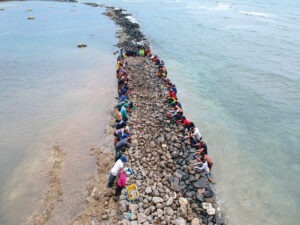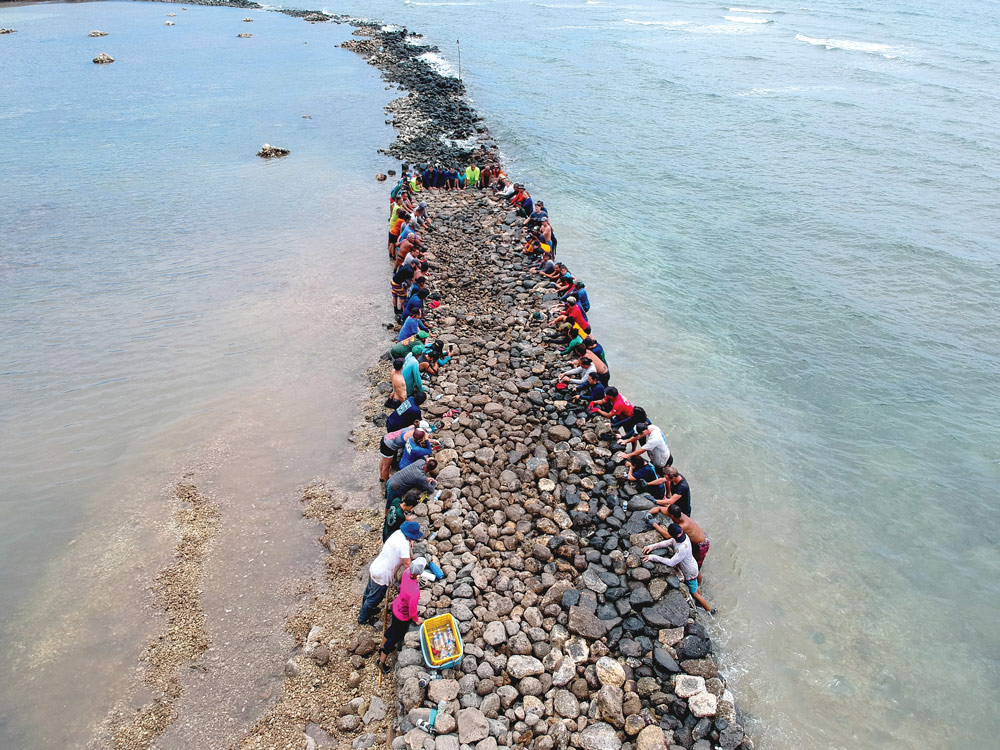
January 21, 2020; New York Times and Indian Country Today
The nation’s decennial census began on Tuesday in Toksook Bay, Alaska, population 661. Getting there is not easy. First, you must fly 500 miles from Anchorage. Then, you need to hop onto a snow machine or four-wheeled all-terrain-vehicle to get into town.
The count, note Emily Schwing and Mike Baker in the New York Times, begins in “rural Alaska during the frigid weeks of winter because frozen ground allows easier access to some villages, and residents are more likely to be home before the spring thaw draws them to their fishing grounds.”
The census may be starting in Alaska, but the difficulty in getting an accurate count of Alaskan Natives remains among the greatest challenges the census faces. Natalie Landreth, a senior attorney with the Native American Rights Fund, tells Joaquin Estus of Indian Country Today that there are structural constraints that impede the count. This, Landreth notes, has little to do with frontline workers and a lot to do with budgetary constraints. To give just one example, no dollars are being spent on language assistance in Alaska, even though Alaska has the “highest percentage of Native language speakers per capita in the United States.”
“I want to tell every American Indian and Alaska Native to be counted as an act of rebellion because this census is designed not to count you,” Landreth adds. “It is designed for you to not have [congressional] districts. It is designed for you to not have federal monies. Make yourself heard because I don’t think they want to hear from you.”
Landreth’s concern is validated by recent history. Setting aside concerns about the Trump administration, the fact is that in 2010, under the Obama administration, the census missed an estimated eight percent of Alaskan Natives in its count. James Tucker, a pro bono voting rights counsel to the Native American Rights Fund, and vice chair of the Census Bureau’s National Advisory Committee on Racial, Ethnic, and Other Populations, notes that in 2010 an estimated 4.9 percent of American Indians on reservation land were undercounted, as were eight percent of Alaska Natives. Blacks were also undercounted by a smaller, but not insignificant 2.1 percent.
Sign up for our free newsletters
Subscribe to NPQ's newsletters to have our top stories delivered directly to your inbox.
By signing up, you agree to our privacy policy and terms of use, and to receive messages from NPQ and our partners.
Those undercounts have major impacts. Carol Gore, Alutiiq, and who is a former member of the same committee as Tucker, noted when speaking to Alaska Native tribal leaders in October 2019 that about $3.2 billion in federal spending in Alaska is determined by the census. The eight percent Alaskan Native undercount in 2010 meant the loss of “tens of millions of dollars” every year for each year of the past decade. The census, add Schwing and Baker, “provides a vital foundation of data used to determine everything from congressional representation to federal spending on education, health care and food assistance.”
Obstacles to the count include a lack of internet access by nearly half of the Native American community. Then, there is the lack of paved streets and addresses. And language barriers are also prevalent. For many in Toksook Bay, the native Yugtun is the mother tongue, with English a second language.
Ham-handed census outreach efforts haven’t helped. In November, the census bureau launched an ad campaign to encourage Alaskan Native participation in the census, but many Alaskan Native community names were mispronounced in the ads. “I was shocked,” Nicole Borromeo, the general counsel for the Alaska Federation of Natives, tells Schwing and Baker.
Given the inadequacy of federal efforts, Native groups and nonprofits are stepping in to fill the gap. Veri di Suvero, director of the Alaska Public Interest Research Group, points out that their group has translated census materials into four major Native languages and some additional dialects. Di Suvero adds that “by having materials translated into their languages, it means that there is more connection and understanding of why the census is important and also, what this will do for the community.”
Gabe Layman, who chairs the Alaska Census Working Group, a coalition formed a few years ago by the statewide nonprofit Foraker Group, says the coalition he works with brings together dozens of nonprofits, governmental and tribal entities, and private companies, including prominent employers like Alaska Airlines, who, Layman notes, need the census data to plan their own business strategy.
Kevin Allis, chief executive of the National Congress of American Indians, tells Schwing and Baker that often the only option local communities have had is to fund their own efforts to build grass-roots engagement in preparation for the count. “We’re filling in the gaps here because if we don’t do it, then our folks don’t get counted.”—Steve Dubb












